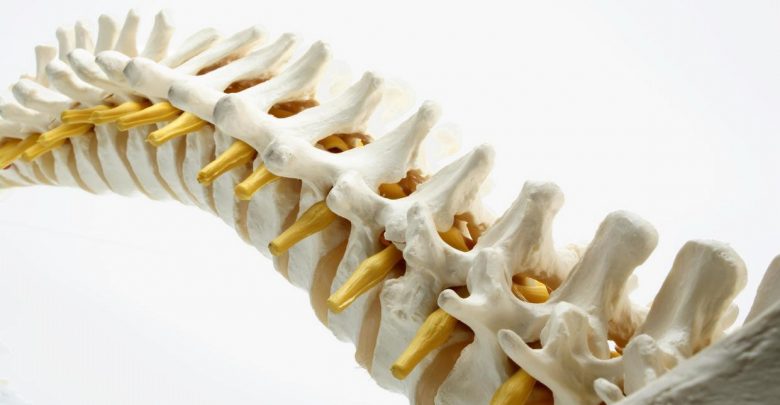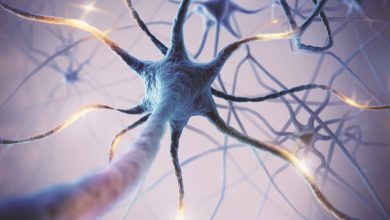
The World Health Organization (WHO) estimates that between 250,000 to 500,000 people around the world suffer from spinal cord injuries. The highly debilitating condition not only limits a person’s motor function but also has economic and social consequences. Currently, there are limited treatment options; therefore, there is a need for effective therapeutic techniques. And it seems scientists at Yale and Sapporo Medical University may have found one. Using stem cells, scientists successfully treated patients with spinal cord injuries.
Spinal cord injuries are sustained by hundreds of thousands of people every year, with many patients experiencing a significant and often permanent loss of movement and physical sensation resulting from nerve damage.
Beyond intensive physical rehabilitation programs – which can improve outcomes in some cases – treatment options are virtually non-existent. But new results from a phase 2 clinical trial offer fresh hope for remedies on the horizon.
In a major breakthrough, researchers have restored motor functions in patients with spinal cord injuries, using patients’ own stem cells.
The trial enrolled 13 participants between the ages of 21 to 66 years. All suffered from non-penetrating spinal cord injuries; sustained from falls or minor trauma. As a result, the participants experienced symptoms such as impaired motor function, sensory loss, and bladder and bowel dysfunction. They experienced a range of functional improvements in their condition after being treated with an intravenous infusion of their own stem cells, derived from their bone marrow.
The stem cells in question are known as mesenchymal stem cells (MSCs), which are multipotent adult stem cells with the ability to differentiate into a variety of cell types, enabling them to repair bone, cartilage, muscle, or fat tissue.
Despite the potential promise of these cells, their use as an actual therapy has generated considerable controversy, especially after Japan fast-tracked commercialisation approval in late 2018 in advance of thorough data on the safety and effectiveness of the experimental treatment.
Over two years later, the researchers behind the therapy, called Stemirac, now have more of those data to share, and while it won’t be enough to placate critics, the findings nonetheless offer valuable new information on what MSCs may do for patients with SCI.
More Than Half Show Improvement
The neurological function of the patients was assessed 6 months post-infusion. Using The International Standards for Neurological and Functional Classification of Spinal Cord (ISCSCI-92).
12 out of the 13 patients showed neurological improvement. Whereas, more than half the patients reported improvements in functions such as using their hands, walking. Furthermore, the stem cell infusion did not result in any adverse events such as abnormal cell growth or neurological deterioration.
However, the study does have a few limitations. The unblinded study design means we cannot rule out observer bias as a possible factor impacting the results. Moreover, there was no control group, the sample size was small, and the study was uncontrolled.
“The idea that we may be able to restore function after injury to the brain and spinal cord using the patient’s own stem cells has intrigued us for years,” explains neurologist Stephen Waxman from Yale University, a senior author of the study .
“Now we have a hint, in humans, that it may be possible.”
In the study, the researchers point out that while other trials have also looked at using MSCs to treat SCI via injection methods, their own technique, using intravenous infusion, could have particular benefits.
“Importantly, intravenously infused MSCs may affect not only the injury site, but other parts of the central nervous system including brain and blood vessels,” the authors explain in their paper.
Whether that explains some of the results seen in their 13 patients is unclear, but the outcomes themselves are notable.
Of the individuals treated with Stemirac, all of whom had non-penetrative SCIs (meaning their spinal cords were not severed) sustained during serious physical accidents, all but one had demonstrated improvements in key sensory or motor functions by six months after the infusion.
Over half the group showed substantial improvements in things like walking ability or using their hands, and in many cases, graded improvements on a standardised impairment scale could be seen as soon as one day after the treatment, although other cases took weeks.
Significantly, no adverse effects were reported.
While the researchers acknowledge that theirs is a small trial with various limitations – including the possibility that the recoveries seen may have been somewhat spontaneous – they contend that the initial data show we’re looking at something here that’s safe, feasible, and worthy of follow-up studies with greater amounts of patients.
“Although this initial case study was unblinded and uncontrolled, the SCI patients appeared to demonstrate a tendency of relatively rapid improvement of neurological function that was often apparent within a few days following infusion of MSCs,” the team writes.
As for how the MSC infusion delivers its healing, results from studies on animals have made the researchers think the stem cells secrete neural growth factors that restore important structures that reduce swelling, while restoring vital chemical activity.
In terms of the rapid improvements, the team suggests a chemical called brain derived neurotrophic factor (BDNF) may be involved, which is known to support the health of neurons via numerous mechanisms.
Hopefully, more research in the future can demonstrate the true extent of the potential benefits of this treatment.
Despite the limitations, the results of the study provide a major breakthrough in the treatment of spinal cord injuries. Furthermore, the study shows that stem cell infusion is safe and effective in treating spinal cord injuries. Researchers believe further studies will help confirm the results of this preliminary trial.
The findings are reported in Journal of Clinical Neurology and Neurosurgery.





